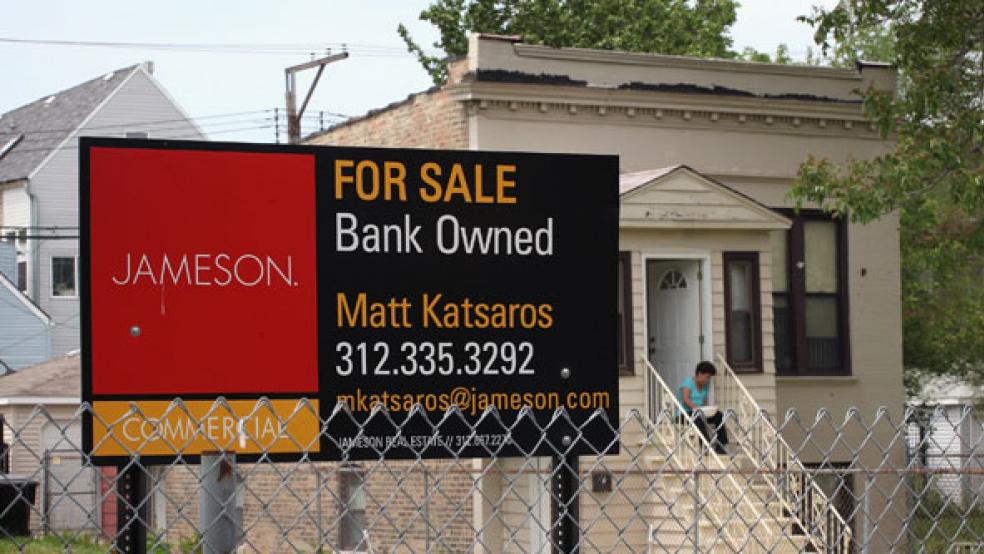There’s a new kind of neighbor in town, and they won’t be stopping by for a barbeque anytime soon.
In many communities nationwide, that new neighbor is a bank or other mortgage lender. Since the onset of the housing crisis five years ago, the nation’s lenders have been steadily amassing vast residential real estate empires, by taking back foreclosed homes that don’t sell at auction. The number of homes owned by financial institutions has doubled since 2007 to 872,000, according to real-estate data firm RealtyTrac. With 3 million more foreclosures expected in 2011, lenders could end up repossessing several million more in coming years.
So what kind of neighbors do mortgage lenders make? That may depend on where you live.: Some legislators and community activists say banks do a better job of maintaining properties in wealthier neighborhoods than they do in middle-income and marginal ones. And four cities—Baltimore, Cleveland, Los Angeles and Memphis —are taking lenders to court in an effort to force them to take better care of their properties. In separate lawsuits, the cities are seeking hundreds of millions in damages from lenders, to cover increased city maintenance costs and reduced property tax revenues.
In the working-class Memphis neighborhood of Burlington, Lynda Whalen is leading a battle against foreclosure blight. After the bank foreclosed on one house and the owners left, it wasn’t long before the front windows had been smashed, and the yard was strewn with debris. Whalen, president of the neighborhood association, and her neighbors boarded up the house; they paid a contractor to clean up the yard. Because the mortgage was federally guaranteed, in mid-May the bank turned the house over to the U.S. Department of Housing and Urban Development (HUD). Maintenance has since improved, according to Whalen. (The bank, which a HUD field service contractor identified as Wells Fargo, did not return a call for comment in time for publication.)
In California cities like Long Beach and Palm Springs where investor Jim Shute buys and sells distressed properties in the $100,000 to $200,000 range, banks’ performance is similar. Big banks tend to do the minimum necessary to avoid being cited for code violations, he says. They usually keep the grass cut and board up broken windows, but they don’t do repairs, plant flowers or make other investments that would improve the sales price. That’s good news for Shute. “It actually does hurt what they can get for it,” he says.
The situation is different in the more affluent enclaves where Las Vegas realtor Ken Lowman works. In high-end Las Vegas markets, such as Southern Highlands, it’s rare to find bank-owned properties that aren’t well taken care of, he says. Banks pay close attention to the condition of these properties because they’ll likely get back the money they put into maintenance and repair—on a $4 million sale, green lawns, clean windows and well-kept pools, have a big impact on the sales price.
In some ways, it makes economic sense for banks to manage the properties they own (often called REO properties, for “real-estate owned”) differently in wealthy versus modest neighborhoods. Because retail buyers tend to look for move-in ready properties, while investors tend to seek fixer-uppers, banks generally invest in maintenance and repairs in the former but not the latter. In Memphis, properties in wealthier neighborhoods are aggressively marketed to retail buyers, says Webb Brewer, one of the lawyers representing the city in its lawsuit. Webb had a researcher look at REO buyers in white, wealthier neighborhoods—70 percent of them were retail and 30 percent were investors; in lower income, minority neighborhoods, the figures were reversed.
Other data supports the claims that neighborhood demographics influence how well bank-owned homes are maintained. An April report from the National Fair Housing Alliance (NFHA), a national nonprofit that addresses housing discrimination, concluded that maintenance practices were “consistently better” in white neighborhoods than in those that were predominantly African-American. The report analyzed 624 bank-owned properties (also known as “REOs,” for “real estate owned”) in four states.
Mortgage lenders dispute those claims. “All of the homes that we have on our books are treated exactly the same way,” says Philippa Brown, spokesperson for American Home Mortgage Servicing Inc. “They’ve all got to be up to code. Do I think there’s been such a volume of homes that some have fallen through the cracks? Definitely. But in every neighborhood…if they’re brought to our attention we fix them fast because we want to get them sold.”
REOs in marginal and modestly priced communities may end up neglected because lenders often contract with outside “property preservation” firms, who in turn hire local contractors. Because of the property preservation business is booming as the number of foreclosures grows, many new and inexperienced players are entering the business. Critics say that means the quality of the contractors and subcontractors varies widely. “The problems arose in this industry as the market changed,” says Michael Anz, CEO of property preservation company MGA Services, which has operated since 1999. “There have been so many new players in the industry who don’t understand the business.”
In other cases, banks hire local real-estate brokers to get properties ready to sell. But brokers have to pay for repairs and maintenance out of their own pockets, then get reimbursed, according to Mike Krein, president of the National REO Brokers Association. Some brokers decide to skip repairs, especially for lower-end houses. Krein says there’s often pressure on banks from Fannie Mae and Freddie Mac to spread out contracts to numerous brokers rather than picking the few that specialize in REOs.
But with a glut of foreclosures forcing prices down nationwide, banks simply may not be able to sink money into houses that are losing value, according to Albert J. Sumell, an economist at Youngstown State University who has studied the valuation of foreclosures. He says banks just can’t afford to put thousands of dollars into a property if don’t they expect to get it back.
Some local legislators and community groups are taking steps to change that economic equation.
In Ohio, legislation passed in April 2010 allows some counties to start nonprofit “land banks” that are funded through county-assessed penalties and interest collected on overdue property taxes. Land banks can acquire lenders’ unwanted REOs through donation or purchase; in exchange, the land bank clears the title of liens (fines, back taxes). The county then decides how best to use the property—either rehabilitating and selling it or demolishing it.
And in California, a state foreclosure reform law passed in 2008 allows cities and counties to require banks to register foreclosed properties and levies fines if properties aren’t maintained. An ordinance in Long Beach, for example, allows the city to fine a bank up to $1,000 a day if it doesn’t do basic maintenance like cutting grass and fixing broken windows. Illinois now is considering similar legislation.
In Long Beach, banks have registered 418 properties, and the city hasn’t had to issue a single fine in the two months since the law was enacted. That’s a success, even if the city doesn’t make a dime in fines, according to Rex Richardson, chief of staff to city councilman Steve Neal, who introduced the ordinance. “Good code enforcement should never be a revenue generator,” he says.
Related Links:
Foreclosures: Luxury Homes on the Auction Block (The Fiscal Times)
Investors are Flipping over Low Home Prices (The Fiscal Times)
Housing Double Dip: Why Prices Will Keep Dropping (The Fiscal Times)





